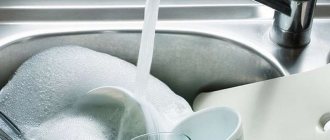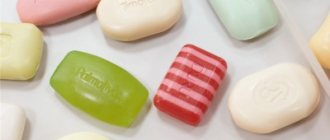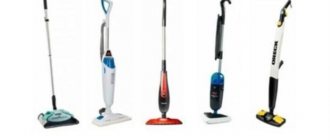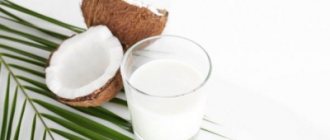Each housewife has a certain supply of various household chemicals. We can safely say that this has a huge advantage, because in case of an emergency you do not need to urgently run to the store to buy, for example, powder or dishwashing detergent. The same situation is with soap. After all, in every bathroom you can find any type of this product: from simple factory bars to the most beautiful ones made by yourself.
Each of us knows that this detergent is not a perishable product. However, it also has certain rules and shelf life. Moreover, they may differ among different species.
What is the expiration date
Bar soap lies quietly for 10 or 20 years without changing its appearance. But the packaging usually says a shorter period? How is it determined?
By labeling “best before...”, the manufacturer only guarantees that during this period all components will exactly meet the stated parameters. And what happens to them after is no longer his area of responsibility. So, soap “fades out” over time, losing its aroma.
Do the shelf life of other types of soap differ?
As mentioned above, the shelf life and shelf life of different types of detergent are largely the same. However, there are several important “buts” here:
- the shelf life of a product in liquid form rarely exceeds 12 months, while in solid form it can reach 36;
- a handmade product with a huge amount of natural ingredients has a shorter shelf life;
- Baby soap cannot be stored for more than 12 months.
Particular attention is paid to the last two points. After “failure,” a natural product will begin to smell unpleasant.
Increased demands are placed on children's products, since baby's skin is more sensitive and requires special care. However, after the shelf life expires, an adult can use it for another 2-3 months.
How long does natural soap last?
Decorative soap is stored
from 6 months to a year, this is determined by the shelf life of the soap base itself. Since we add natural ingredients, the period from a year is reduced to 6-8 months.
Interesting materials:
How to add a contact button on Instagram? How to add a comment on Instagram? How to add a feed to Instagram? How to add a store on Instagram? How to add a mask on Instagram by name? How to add a mask on Instagram? How to add a mask on Instagram? How to add a menu to Instagram? How to add a place to Instagram 2022? How to add a place to your Instagram profile?
Features and expiration date
Soap in solid form has a shelf life of 12 months from the date of manufacture. If the composition contains certain chemical elements, the period may be longer. The maximum shelf life of soap with special additives is 36 months.
In liquid form – has a shelf life of 12 months. Moreover, it does not depend on the presence of chemical additives. That is, in any case, the deadline does not change.
Storing handmade soap depends on the components that make up it. In some cases, it can be stored for several years. If the product is made from a soap base, it also has a shelf life of 12 months, but may be extended depending on the presence of additives.
Toilet soap is intended for cleansing the surface of the skin from impurities and for body care. Includes:
- Salts of fatty acids. They provide the cleaning effect. Their content varies from 72 to 80 percent.
- Vegetable fats.
- Various additives. Herbal extracts, oils, flavors, etc.
Can be produced in solid and liquid form. The first option has the shape of a square or rectangle, the second comes in a bottle with a dispenser. Each of them has its own shelf life and storage.
Handmade soap made from natural ingredients can be stored for no more than 2 months.
Choosing the right one
Since soap is used as a personal hygiene product, you need to choose it extremely carefully and take into account the following points:
- Soap should be sold in a specialized store.
- The packaging of the product must indicate its composition, which should not contain synthetic additives or dyes.
- High-quality soap cannot be cheap.
- The expiration date of the product must be indicated on the packaging.
- The soap should be hard and non-sticky with a uniform color without stains or salt deposits.
- There should be no smell of rancid fat or other unpleasant odors.
We invite you to familiarize yourself with Differentiated payment and annuity repayment method - what is it?
Deadlines
Soap belongs to the category of goods that, under proper conditions, can be stored indefinitely, but still have an expiration date. There are many varieties on the market, each type has a specific purpose and permissible period of use.
Children's
Used when bathing children from birth, adults with sensitive skin and a tendency to allergies. It should not cause irritation, rashes, or skin reactions. Therefore, the requirements for the composition and quality of raw materials are especially strict; the alkaline component is less. The children's version consists of:
- animal fats;
- oils;
- lanolin or glycerin;
- boric acid;
- fatty acids;
- spermaceti;
- beeswax.
Plant extracts may be added to provide a soothing, softening effect on baby's skin. If the goal is to have a bactericidal effect, triclosan and triclocarban are added.
IMPORTANT! Baby soap should not contain fragrances, dyes, or synthetic components.
The more natural the product, the shorter the period of use it has. Closed can be stored for 1-2 years, and open - 6 months.
Liquid
The liquid consistency product is convenient to use and dose, so they readily replace the usual bars.
IMPORTANT! Liquid soap is not a breeding ground for germs, since there is no direct contact with the skin.
Not recommended for washing, as the components may cause irritation to the mucous membrane of the eyes.
Despite the name, it has a different composition from the solid form. The active ingredients are not fatty acids, but surfactants. The pH level is an order of magnitude lower, it is perfect for oily skin, as it regulates sebum production.
Can retain properties for up to 2-3 years, open - 6 months.
Toilet solid
It has a standard base: natural or synthetic acids and sodium salt. The manufacturer adds components to them to give a pleasant aroma, color - fragrances and dyes. They do not have a very good effect on the condition of the skin and can cause allergies and other dermatological problems. It also contains oils and stearin.
ADVICE! It is better to choose a product with a short composition.
Depending on the composition and properties, several brands are distinguished:
- Neutral. The highest quality, solid, does not contain potassium carbonate or sodium. If fragrances are used, then high-quality ones. Contains: 78% fatty acids, fatty raw materials of the highest and first grade, coconut oil.
- Extra. Also considered high quality. The composition is identical to neutral, but there is a small amount of carbonates and sodium present - about 0.2%.
- Children's. In addition to cleansing, it should soften the delicate baby skin, not overdry it, and be hypoallergenic. To do this, add glycerin and beeswax.
- Ordinary. It has a standard soap base and additives to extend shelf life, add color and aroma.
A little history
Soap, in the everyday life of modern people, is such a common occurrence that we cannot even imagine how people once managed without it. Archaeologists found the first recipe for soap in Babylon. It was an engraving on a clay tablet dating back to approximately 2800 BC. The description says that soap in those distant times was made from fat and ash, and was used in medicine to heal wounds. Over time, other properties of this product were discovered - women noticed that mixed ash and fat washed clothes well. The first soap factories, as history goes, began to be built in Italy, France and Spain in the 10th century. In the 16th century, the largest number of soap factories was concentrated in Marseille. Recipes for making soap changed over the years and became more diverse, but the price was always high, so only wealthy people could afford to use this hygienic product.
In the 15th century, a certain Gavrila Ondreev set up the first soap factory in Rus'. And starting from the 17th century, soap making in Russia became commonplace. It was called the “potash affair.” Unfortunately, a lot of forests were cut down in those days. “Potash production” was organized as follows: felled trees were burned in huge boilers, then the ash was steamed, and then potash was obtained by evaporating the moisture. A new technology for making soap, discovered by the French physicist Nicolas Leblanc in 1685, put an end to barbaric deforestation. The scientist invented a factory method for producing alkali from salt. In Rus', the first soap factories owe their origin and development to Peter I. And over time, the city of Shuya became the main center of soap production.
Until the mid-19th century, soap remained an unaffordable product for the common people. It was used exclusively by nobility. Peasants used lye (ash poured with boiling water and steamed in an oven) for hygiene. In the villages they washed themselves with decoctions of herbs, lingonberries, white beans, and kvass grounds were also used.
Tips and tricks for proper storage
- You cannot store several pieces in one soap dish. This is especially true for different types. They may stick together. Or you need to choose a soap dish of such a size that it can contain several pieces without touching each other.
- Soap should not be constantly in water. Therefore, it is important to choose the right soap dish.
- Very easy to use liquid soap. It is contained in a special bottle. Does not come into contact with the skin of the hands and will not contain pathogenic microbes.
- You should not add another product to a bottle of liquid soap if the previous product is not finished.
- Do not use expired products.
- If there is an unpleasant odor or a change in consistency, then such a product is disposed of.
- If the laundry soap is cracked and dry, you can use it in the form of ground shavings, which are stored in a glass jar. This option is used both for hand washing and for adding to the washing machine.
- It is prohibited to store the product in the refrigerator. The humidity there is too high. This will lead to loss of beneficial properties and qualities.
- Store different types of soap products separately from each other.
- If a white coating forms on the products during storage, it can be wiped off with a damp cloth.
- You need to buy products in stores where the quality of the goods is monitored. This is important to avoid buying counterfeits that contain harmful components.
From an environmental point of view
As soon as liquid soap appeared, it was immediately declared more environmentally friendly, since it foams faster and uses less water. But after the first wave of general rejoicing passed, experts studied the issue in more detail and came to the following conclusions:
- Liquid soap is used 7 times more than solid soap every time you wash your hands. And on a global scale, this means tons of chemical raw materials and gigantic production facilities that have a negative impact on the environment.
- Package. The solid product is sealed in paper or plastic. A paper label decomposes well, a plastic one is much worse. But this cannot be compared with plastic bottles - they are larger and multi-component, which makes them more difficult to recycle. In addition, liquid soap has a higher consumption, which further aggravates the situation.
- Scientists have already found that the carbon footprint of liquid soap is 25% higher than that of solid soap. So the liquid product is already harming the planet more.
So if you ask which soap is better - liquid or solid, from an environmental point of view, the answer will be clear: if you love the planet, choose solid! Or at least use a reusable dispenser.
How to properly store soap
It is important to remember at what temperature to store soap: no higher than 25°C, since the fat and flavorings in the composition can react and the soap will deteriorate and acquire an unpleasant, stale smell of fat.
Soap can be liquid or solid, and it should be stored correctly as indicated on the packaging by the manufacturer. Unopened bar or package of liquid, as well as sealed handmade soap should be stored at no higher than room temperature. Therefore, you should think about where to store soap; this place should not have high humidity and temperature. Everyone knows how to properly store soap after you start using it: on a special soap dish.
Additional Ingredients
The second main ingredient in laundry soap is lye. It is precisely this that makes the fat into the soap itself. Alkali is used to saponify fats and neutralize acids. Sodium salts (caustic soda) and sodium carbonate (soda ash) are used.
Rosin can be used as an additional ingredient, but it gives stickiness. To prevent this effect sodium silicate is added. Zinc and titanium white can also be used to lighten raw materials. Also, modern production allows the addition of kaolin to soften the alkali. For more details about the composition and quality of soap, watch the video from Yuri Storozhnichenko.
The composition of the soap according to GOST does not contain fragrances, fragrances or harmful impurities. Therefore, real laundry soap does not cause allergies. However, the composition of many modern products still wants to be the best. We invite you to compare several options.
Tips for extending the shelf life of soap
- In order for the soap to retain its beneficial properties longer, you should follow some rules:
- If you purchased the product without packaging, you can wrap each bar in paper, parchment or cloth;
- Different types of soap must be stored separately, otherwise they lose their original aroma;
- Soap cannot withstand sudden changes in temperature, so you should not store it in the refrigerator or, conversely, near heating appliances. Direct sunlight is also contraindicated - it is better to choose a dry, dark place where the humidity does not exceed 75%;
- It is better to place the piece that you are already using in a soap dish with holes for draining water from the bottom so that it does not accumulate and the soap does not get wet.
How to tell if soap is expired
If the packaging has not been preserved, then it is difficult to understand whether it is expired or not. However, its suitability can be determined by certain external factors and characteristics. It should not be used in the following cases:
- Lost its original shape. This sign indicates that the block has been exposed to moisture, direct sunlight or other factors for a long time.
- The piece is cracked.
- Loss of aroma and color - in any form.
- A coating has formed on the surface.
- Mold has formed.
- The liquid form begins to become cloudy, separate, and a sediment appears.
All these signs indicate one thing - you did not follow the storage rules. In any case, using the product is strictly prohibited, since it is not known what reaction it may cause in the body.
Reference. If the soap is expired, then it is prohibited to use it for its intended purpose. After the expiration date, you can still wash your hands for some time or add it to hand wash.
Important subtleties
Simple recommendations will help ensure that the soap retains its properties:
- If you purchased several bars of soap with different scents, they should not be stored together. Such storage will lead to the fact that the aromas will mix, and not a trace will remain of the previous fragrance.
- Instead of sealed cling film, you can use a dry box with a tight lid.
- If you find drops on the surface of the soap, it means that you did not comply with the storage conditions of the product. Do not rush to throw away the soap if drops are detected, since these changes do not affect the properties and characteristics of the product in any way. All you have to do is do the following: open the soap, put it on a dry and clean sheet of white paper, and let it dry naturally. After completing this procedure, you need to wrap the soap in cling film.
How to recognize expired?
If there is no packaging, it is not known when the product was produced and how long it has been stored, you can determine its suitability by external signs. You should not use a piece that:
- lost its original shape. This indicates that it was exposed to moisture or sun for a long time;
- cracked;
- soaked;
- faded, lost aroma;
- covered with plaque and mold.
All these signs indicate expired or improper storage. In both cases, there is no guarantee that it will not cause a reaction in the body.
What quality products cannot be returned?
An important aspect when returning cosmetics is determining the quality of the purchased product and identifying obvious shortcomings of the product. The buyer will not be able to return the purchase in the following cases:
- inconsistency of the selected color, smell or consistency of the cosmetic product;
- failure to obtain the expected effect;
- clear confirmation of the proper quality of the product;
- the presence of appropriate labeling indicating all the necessary information about cosmetics.
What is laundry soap
This detergent is familiar to everyone since Soviet times. The composition of laundry soap includes a large amount of alkalis, fatty acids - up to 72%. The activity of ions of this composition (PH) is very high and reaches 11-12. Laundry soap is divided into several categories based on fatty acid content: 70.5, 69, 64%. A piece is obtained by cooling a special soap glue. Vegetable or animal fats are used for raw materials, so the product is environmentally friendly and hypoallergenic.
Technology
The production of soap by the production method is based on the hydrolysis of fats with alkalis, resulting in alcohols and alkali metal salts.
To make it, heated fats are saponified with sodium hydroxide in special digesters. As a result of the reaction in digesters, a homogeneous viscous liquid is formed - soap glue from soap and glycerin, which thickens when cooled. A low-grade product is prepared from it, containing 40-60% fatty acids.
To make sound soap, the glue is treated with electrolytes. As a result of this procedure, the liquid is separated into 2 layers:
- top layer - contains 60 percent or more fatty acids;
- the lower one is soap liquor, with a high content of glycerin and polluting components contained in the feedstock.
In addition to the above types of soap, solid sodium and liquid potassium soaps are also produced. In the first case, caustic soda is used, and in the second, potassium hydroxide.
At the first stage, the so-called soap glue is obtained. Premium raw materials, such as rendered animal fat, are saponified in a kettle. It is heated, mixed with caustic sodium or potassium, and boiled for several days. Low-quality fatty acids are boiled down and then salted out, freeing and purifying the soap core from unwanted impurities to obtain a high-quality product.
At the second stage, the product is given a marketable appearance: cooling, drying, molding, pressing, cutting, labeling, etc. occurs.
Using laundry soap
This detergent has been actively used in solid and liquid form since the times of the USSR. When used correctly, the product will bring great benefits. It is worth noting that the natural composition is suitable for children and women during pregnancy. Skilled housewives can treat many diseases with the help of this remedy, use soap against insect bites, and against pests in the country. Reviews confirm the effectiveness of this inexpensive product.
In folk medicine
The antiseptic, regenerating, antifungal and wound healing effects of the product made it an excellent option for home treatment. Knowing how to make a soap solution from laundry soap, ointment or compress, you can cope with a variety of problems:
- Douching with a soap solution helps well against thrush.
- The product can be used as a suppository for constipation.
- For hemorrhoids, you can gently treat the nodules with soap and water to relieve pain and inflammation.
- For skin damage, a weak solution helps speed up the healing process.
- For nail fungus, it is recommended to take baths with soap shavings.
- For abscesses and blisters after burns, you can treat the damaged area with a soap solution.
- For a runny nose and sinusitis, you can lubricate the nasal cavity with a weak solution of soap to prevent the growth of bacteria and the spread of infection.
- This remedy is effective against influenza due to its antiseptic properties.
- For bedsores, it is recommended to treat patients' skin with cotton swabs soaked in soapy water.
In cosmetology
Since laundry soap consists of natural ingredients, it is widely used in cosmetology. For example, this product is suitable for solving the following problems:
- A prepared paste of water and soap shavings helps get rid of dandruff.
- Washing your hair with laundry soap helps normalize the functioning of the sebaceous glands.
- Washing with soap is an effective way to eliminate acne.
- Baths with a weak warm solution of household soap shavings help get rid of cracked heels.
At home
Using this product for household needs helps to cope with any contaminants, even oil paint and fuel oil. The use of soap for washing is especially important, because with its help any stains on clothes disappear, despite the fact that the composition does not cause allergies and is absolutely harmless. In addition, the soap solution can be used to combat garden pests: you need to spray trees with it or treat plant leaves.
Sources
- https://tonservis.ru/kakoy-srok-godnosti-u-myla/
- https://my-pic.ru/himiya-v-bytu/srok-godnosti-hozyajstvennogo-myla.html
- https://setka22.ru/raznoe/srok-hraneniya-myla.html
- https://PolzaVsVred.ru/drugoe-hranenie/srok-godnosti-myla.html
- https://kakhranit.ru/kak-nuzhno-xranit-mylo-pravilno/
- https://jaay.ru/krasota-i-zdorove/mylo/srok-godnosti-tualetnogo-myla
- https://domcvetyhobbi.ru/sovety-i-opyt/srok-hraneniya-tualetnogo-myla.html
- https://SrokiGodnosti.ru/gigiena/srok-godnosti-myla
- https://vkusnota24.ru/bytovye-sredstva/srok-godnosti-myla-tualetnogo.html
- https://tandyr34.ru/bytovye-sredstva/srok-hraneniya-hozyajstvennogo-myla.html
- https://MagazinBombay.ru/medsredstva/srok-godnosti-myla.html











